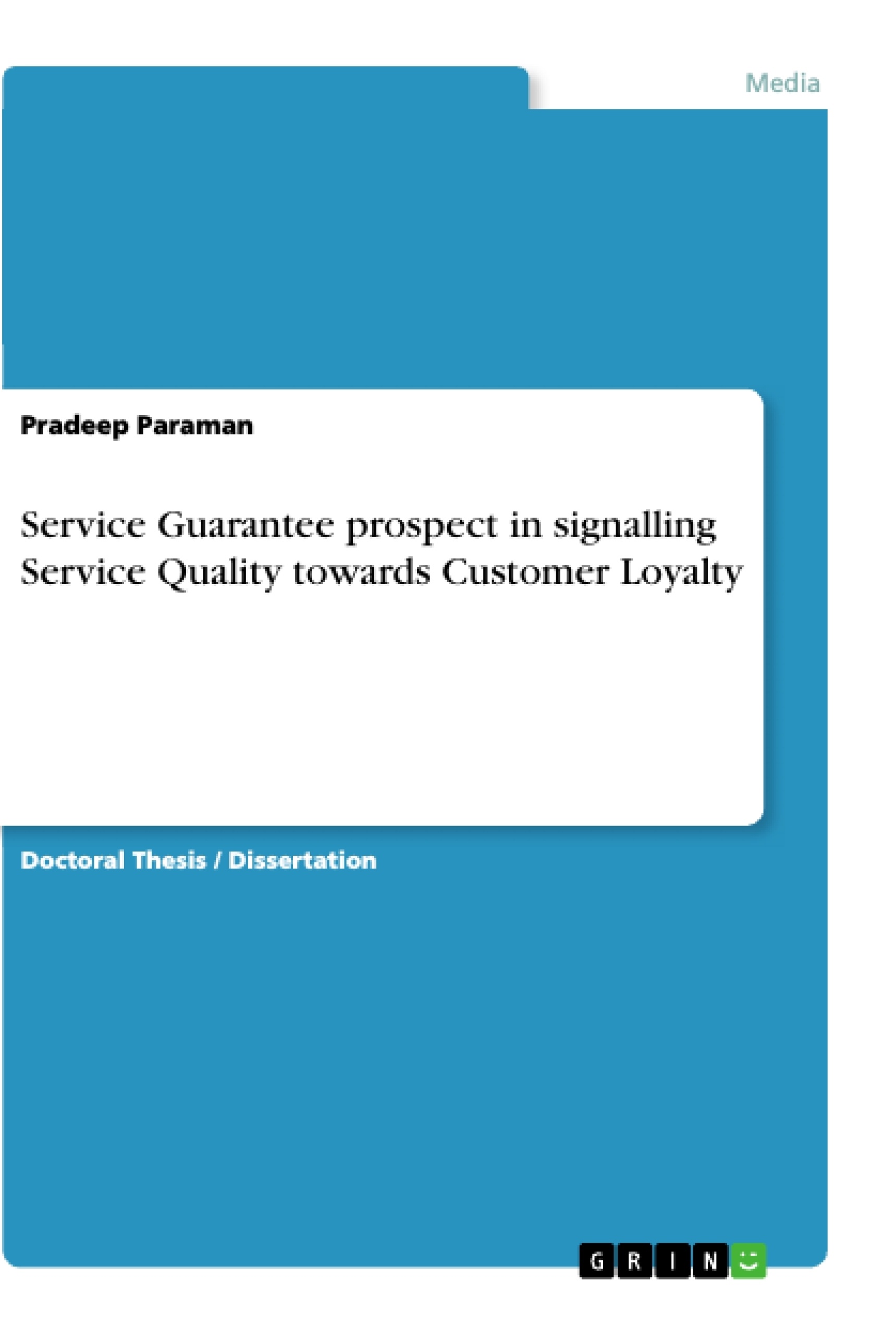This study provides empirical evidence to clarion calls for insights on the lack of work on resorts specifically the five-star resorts sector which is referred to works by Line and Runyan in identifying the deficiency in empirical evidence towards literature on resorts.
This study provides new evidence into the formation of loyalty determinants in the five-star resorts, specifically in the Malaysian tourism industry. Although various studies have been conducted by scholars to identify such a phenomenon, very few has identified salient marketing strategies to be of value to practitioners, in overcoming the lack of loyal customers.
This study frames the current problems faced by academia, the industry and the government to produce a cogent discussion on how to solve these problems by providing a strong and tested strategy, the service guarantee, to enhance customer loyalty in the resort sector. Problems associated with the industry and marketing gaps in literature are mainly based on a lack of strategy and factors in determining loyalty from the customers’ perspective. Based on gaps in literature related to the hospitality industry as a whole a lack of a structural modelling and is identified. The second order latent modelling that this study envisions, would provide clearer directions to the industry and other stakeholders to develop and mitigate customer centric marketing strategies to acquire and retain their target markets.
Inhaltsverzeichnis (Table of Contents)
- Abstract
- Dedication
- Chapter 1: Introduction
- 1.1 Background
- 1.2 Problem Statement
- 1.3 Research Objectives
- 1.4 Research Questions
- 1.5 Significance of the Study
- 1.6 Scope and Limitation
- 1.7 Organization of the Study
- Chapter 2: Literature Review
- 2.1 Service Quality
- 2.2 Perceived Value
- 2.3 Customer Satisfaction
- 2.4 Corporate Image
- 2.5 Service Guarantee
- 2.6 Customer Loyalty
- Chapter 3: Theoretical Framework
- 3.1 Signaling Theory
- 3.2 Prospect Theory
- 3.3 Service Quality as a Second-Order Construct
- Chapter 4: Research Methodology
- 4.1 Research Design
- 4.2 Population and Sample
- 4.3 Data Collection
- 4.4 Data Analysis
- Chapter 5: Findings and Discussion
- 5.1 Descriptive Statistics
- 5.2 Testing of Hypotheses
- 5.3 Discussion of Findings
- Chapter 6: Conclusion
- 6.1 Summary of Findings
- 6.2 Theoretical Contribution
- 6.3 Managerial Implications
- 6.4 Recommendations for Future Research
Zielsetzung und Themenschwerpunkte (Objectives and Key Themes)
This study aims to explore the impact of service guarantee on customer loyalty in the five-star resort sector of the Malaysian tourism industry. By investigating the relationship between service guarantee and service quality, perceived value, customer satisfaction, and corporate image, the study seeks to provide empirical evidence for the effectiveness of service guarantee as a marketing strategy to enhance customer loyalty.
- The role of service guarantee in promoting customer loyalty in the five-star resort sector.
- The influence of service quality dimensions, perceived value, customer satisfaction, and corporate image on customer loyalty.
- The application of signaling and prospect theories in understanding the impact of service guarantee on customer behavior.
- The development of a comprehensive model to explain the relationship between service guarantee, service quality, and customer loyalty.
- The identification of managerial implications for enhancing customer loyalty in the Malaysian resort industry.
Zusammenfassung der Kapitel (Chapter Summaries)
Chapter 1 provides an introduction to the study, outlining the background, problem statement, research objectives, significance, scope, and limitations. Chapter 2 presents a comprehensive review of the relevant literature on service quality, perceived value, customer satisfaction, corporate image, service guarantee, and customer loyalty. Chapter 3 develops the theoretical framework, drawing upon signaling and prospect theories to explain the impact of service guarantee on customer behavior. Chapter 4 details the research methodology, including the research design, population and sample, data collection, and data analysis techniques. Chapter 5 presents the findings of the study, including descriptive statistics, hypothesis testing, and discussion of the results.
Schlüsselwörter (Keywords)
The main keywords and focus topics of this research are service guarantee, customer loyalty, service quality, perceived value, customer satisfaction, corporate image, signaling theory, prospect theory, five-star resorts, Malaysian tourism industry, and empirical research.
- Citation du texte
- Pradeep Paraman (Auteur), 2020, Service Guarantee prospect in signalling Service Quality towards Customer Loyalty, Munich, GRIN Verlag, https://www.grin.com/document/948980



